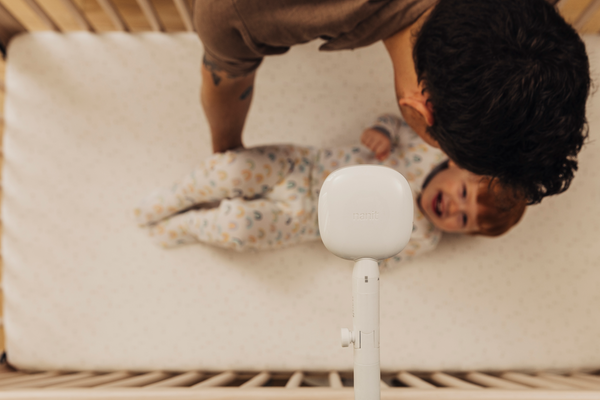In a perfect world, your child would shift easily from three naps to two, from two naps down to one. They would fall asleep easily at the new nap times and wake up with a generous window before bedtime. They wouldn’t be cranky or fussy or get you up at the crack of dawn. And yet…this is not a perfect world.
It can be hard to know when your child is ready for those nap transitions, even trickier when outside influences—daycare, for example—add extra pressure to make the transitions happen. But there are signs that help you know the timing could be right and ways to make the switch easier for everyone. Read on for all the nap-dropping tips:
Your Child May Be Ready to Drop a Nap if…
Dr. Natalie Barnett, Nanit’s Vice President of Clinical Research, shares common signs that signal your child is ready to make a nap transition.
Three Naps to Two
“Most babies transition from three naps down to two somewhere around 6 to 7 months,” Dr. Natalie explains. You’ll know your child is ready if…
- Your child isn’t sleepy/doesn’t want to sleep at their regular naptime and/or takes longer to fall asleep.
- You frequently have to wake your child up from their second nap so there’s enough time between the second and third naps.
- Your child fights their third nap.
- Your baby fights bedtime and/or wakes up early (or even earlier) in the morning ready to start the day.
Two Naps to One
The transition from two naps to one generally happens anytime between 13 and 18 months. Here are some other cues that your child is ready include:
- Their first nap is happening later and later.
- Your child sleeps longer during the first nap.
- They have a harder time falling asleep for the second nap.
One Nap to None
Children tend to stop napping altogether between the ages of 2 and 5. The signs that your child is at this milestone are similar to the two to one stage, including
- The one nap edges later and later in the day.
- Your child is having trouble falling at bedtime and/or waking up extra early in the morning, ready to go for the day.
How to Help Your Child Drop a Nap
Whether your little one is going from three naps to two or two down to one, here’s how to make the transition with as little stress and struggle as possible.
Three Naps to Two
- Aim for a schedule with one nap before lunch and one nap after. “I usually recommend that parents hold off on the transition from three naps to two until a child is well established on three solid meals a day,” says Dr. Natalie. “This is because a good lunch before nap two can help lengthen that nap, and the longer nap can help them get through a longer last wake window of the day.”
- Ideally, your child will be awake for five to six hours before going to bed for the night. Nanit’s Sleep Schedule Generator can help you set up a feeding and sleep routine specific to your child and family.
Two Naps to One
- Shorten both the morning and afternoon nap to create a longer wake window between the two. “Over time, your child will transition to having one longer nap midday,” explains Dr. Natalie.
- Be patient and flexible. Some days your child won’t be able to make it without both naps, other days you’ll be able to drop one of the naps with little fuss. When the second nap does start to drop, you may also need to shift your child’s bedtime earlier for a while (possibly as early as 6 or 6:30) as they adjust to the new naptime norm either at home or at daycare. But with time, they’ll settle into the new sleep routine.
One Nap to None
- Shorten the afternoon nap to allow for a five to six hour wake window between naptime and bedtime.
- Shift bedtime earlier (at least for a little while) to help make up for lost naptime sleep.
- Plan for your child to have midday “quiet time” on their own where they play quietly with toys, look at books, or do something else mellow to give everyone a little break.
When these nap transitions happen, it can feel a little rough going for a while—for both you and your child—as you work out the wrinkles of your new schedules. Here are more insights on what naps should look like at a variety of ages as well as tips for long and happy naps!








































